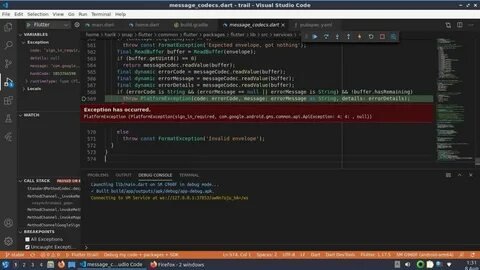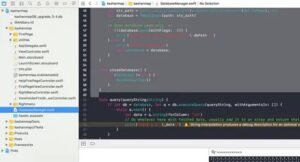Have you ever encountered a cryptic error message like “errordomain=nscocoaerrordomain&errormessage=opgegeven opdracht niet gevonden.&errorcode=4” while using your Mac? If so, you’re not alone. This seemingly complex error code can leave many users scratching their heads, unsure of what it means or how to fix it. But fear not! This comprehensive guide will break down the error, explain its causes, and provide you with easy-to-follow solutions to get you back on track.
Understanding the Error Message
Let’s break down this error message piece by piece:
errordomain=nscocoaerrordomain: This indicates that the error originates from the macOS Cocoa framework, which is responsible for handling many core functionalities of the operating system.
errormessage=opgegeven opdracht niet gevonden.: This Dutch phrase translates to “specified command not found.” This is the key part of the message, revealing that the system couldn’t locate or execute a specific command.
errorcode=4: This code further pinpoints the exact error within the Cocoa framework, but its specific meaning might vary depending on the context.
In simpler terms, this error message signifies that your Mac attempted to execute a particular command but failed to find or understand it. This could be due to various reasons, which we’ll explore next.
Also Read: Conquer Boredom: The Ultimate Guide to 66 EZ Games
Potential Causes of the Error
There are several possible reasons why you might encounter this error:
Incorrect Application Permissions: Certain applications might require specific permissions to access system resources or perform tasks. If the application lacks the necessary permissions, it could trigger this error when attempting to execute a command.
Corrupted Application Files: Corrupted application files can lead to unexpected behavior, including the inability to execute commands. This can happen due to incomplete downloads, software conflicts, or disk errors.
Outdated Application Version: If you’re using an outdated version of the application, it might contain bugs or compatibility issues that cause commands to malfunction.
System Caches or Preferences: Corrupted system caches or preferences can sometimes interfere with application functionality, leading to errors like this.
Third-Party Software Conflicts: Certain third-party software, especially utilities or plugins, might conflict with the application’s commands, resulting in this error.

Troubleshooting Steps to Resolve the Error
Now that you understand the potential causes, let’s dive into the troubleshooting steps to fix the “errordomain=nscocoaerrordomain&errormessage=opgegeven opdracht niet gevonden.&errorcode=4” error:
Check Application Permissions:
Navigate to System Preferences > Security & Privacy > Privacy.
Select the application experiencing the error from the list on the left.
Ensure that the application has the necessary permissions for the task it’s trying to perform (e.g., Disk Access, Files & Folders).
Verify Application Integrity:
Reinstall the application. This will overwrite any corrupted files with fresh copies.
If it’s a built-in macOS application, try running Disk Utility‘s First Aid function to repair potential disk permissions issues.
Update the Application:
Launch the App Store and check for updates for the application. Updating to the latest version might resolve bugs or compatibility issues causing the error.
Clear System Caches and Preferences:
For Basic Cleaning: Use applications like CleanMyMac X or CCleaner (with caution) to remove temporary system files and caches that might be causing conflicts.
For Advanced Users: For a more granular approach, you can manually delete specific caches or preferences related to the problematic application. However, this requires a good understanding of the macOS file system, so proceed with caution.
Disable Conflicting Third-Party Software:
Temporarily disable any third-party software that might be interacting with the application. This can help identify if a specific program is causing the conflict.
If disabling software resolves the issue, you can try updating the conflicting software or finding an alternative.
Contact Application Support:
If none of the above solutions work, consider reaching out to the application’s developer support for further assistance. They might have specific troubleshooting steps tailored to their software.

Advanced Troubleshooting (For Tech-Savvy Users)
The previous steps should resolve the error for most users. However, if you’re comfortable with a more technical approach, here are some additional troubleshooting methods:
Utilize Console Logs: The macOS Console app provides detailed logs about system activity, including error messages. Examining the logs around the time the error occurred might reveal further clues about the cause. Search for entries containing “errordomain=nscocoaerrordomain” or terms related to the specific application.
Investigate Application-Specific Logs: Some applications might have their own internal logs that provide more granular details about their operation. Check the application’s documentation or settings to see if it offers any logging functionality.
Analyze System Sandboxing Issues: macOS utilizes sandboxing to isolate applications and protect system resources. Issues with sandboxing permissions can sometimes lead to command execution errors. This requires advanced knowledge of the macOS security framework and should only be attempted by experienced users.
Important Note: These advanced techniques require a deeper understanding of the macOS system and could potentially lead to unintended consequences if not performed correctly. It’s recommended to proceed with caution and only attempt these steps if you’re comfortable with technical troubleshooting.
Also Read: Exploring Alternatives for the Socially Savvy: Social Media Management Beyond Hqpotner
Preventing Future Errors
Here are some proactive measures you can take to minimize the chances of encountering this error again:
Keep Your System Updated: Regularly update your macOS software and applications to ensure you have the latest bug fixes and security patches.
Manage Permissions Wisely: Only grant applications the permissions they absolutely require to function. Avoid giving unnecessary access to sensitive system resources.
Consider Alternatives: If a specific application consistently causes errors, explore alternative applications that might offer similar functionality.
Maintain System Hygiene: Regularly clean up temporary files and caches using reputable cleaning utilities or manually. This can help prevent system clutter and improve overall performance.
Conclusion
The “errordomain=nscocoaerrordomain&errormessage=opgegeven opdracht niet gevonden.&errorcode=4” error can be frustrating, but with the right troubleshooting steps, you should be able to resolve it effectively. By understanding the potential causes and systematically applying the solutions outlined above, you can get your Mac back to functioning smoothly. Remember, if the issue persists after trying all the steps, don’t hesitate to seek help from the application developer’s support team.
FAQ – Frequently Asked Questions
Here are some commonly asked questions regarding the “errordomain=nscocoaerrordomain&errormessage=opgegeven opdracht niet gevonden.&errorcode=4” error:
Q: What language is “opgegeven opdracht niet gevonden” in?
A: This phrase is in Dutch and translates to “specified command not found.”
Q: I don’t understand Dutch. Can I still troubleshoot the error?
A: Absolutely! The core meaning of the error message is conveyed in English (command not found). The troubleshooting steps outlined earlier are applicable regardless of the language in the error message.
Q: I’ve tried all the steps, but the error persists. What should I do?
A: If none of the troubleshooting methods work, consider reaching out to the application developer’s support team. They might have specific solutions tailored to their software or be able to investigate the issue further.
Q: Is this error a sign of malware infection?
A: While uncommon, malware can sometimes interfere with system processes. However, it’s more likely caused by application permissions, outdated software, or corrupted files. Running a reputable anti-malware scan wouldn’t hurt, but it’s probably not the root cause.
Q: Are there any risks involved in troubleshooting this error?
A: Most of the troubleshooting steps are relatively safe. However, the advanced techniques mentioned (like modifying sandboxing permissions) require caution. If you’re unsure about any step, it’s best to seek help from a tech-savvy friend or professional.
Also Read: Unveiling Aiotechnical.com Health & Beauty: A Deep Dive into the Future
Q: How can I prevent this error from happening again?
A: Keeping your system and applications updated, managing permissions responsibly, and maintaining good system hygiene can significantly reduce the chances of encountering this error again.
By understanding these FAQs, you should be well-equipped to tackle the “errordomain=nscocoaerrordomain&errormessage=opgegeven opdracht niet gevonden.&errorcode=4” error and keep your Mac running smoothly.









